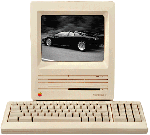Ropeyarn Sunday “Sea Stories” and Open Trackbacks
October 18th, 2006 by xformed

I was a young, full of it, Fleet LT(JG) aboard a brand new greyhound of the seas, the USS LEFTWICH (DD-984). I was a plank owner (a member of the commissioning crew), and the Missile Officer. I had the responsibility of the NATO Sea Sparrow Missile (NSSMS) and Harpoon Weapons System (HWS). My Condition III watch station was that of the Ship’s Weapons Coordinator (SWC), where I sat the watch at the OJ-194 Console in the Combat Information Center (CIC), being the control point between the Captain or Tactical Action Officer (TAO) and the weapons systems for air and surface target engagements.
We commissioned in Aug 1979, and in late January, returned to Ingalls Ship Building and Drydock in Pascagoula, MI, for our post-shakedown availability (PSA – read warranty work by the builder after you take the ship out for 6 months of ops) and also for the Restricted Availability (RAV), which would install many upgrades not originally purchased for the hull during the intial Congressional funding. We had sailed from the shipyard on August 26th, 1979 with the NATO missile launcher installed, but the control consoles and some of the computer cabinets, as well as the cable runs, were not. None of the Harpoon system was initally installed, either. The RAV portion of our 5 months in Ingalls would put both of these systems into service.
One day, I was informed that some people would be coming aboard to discuss human factors for some of the weapons systems, one of which would be the Harpoon Weapons System. So, I went about my work until the appointed time, then went to CIC to await the visitors. An older gentleman in regular civilian clothes came in and introduced himself, then asked me if I had any suggestions on the controls for the HWS. I sat in the SWC chair and proceeded to demonstrate one design flaw I particularly thought was stupid. The AN/SWG-1 Harpoon Shipboard Control Launch Control System (HSCLCS) was mounted perpendicular to the SWC console, so you had to turn to your left in the SWC chair to operate the controls. That wasn’t the issue. The power switch was located on the upper left of the console, but underneath a cover plate that had a screw to hold it closed. Still not bad. The procedure for launching included powering the system up (duh!), then securing the cover over the power switch, and you would go about entering the aim point and cell(s) for launching. On the command to shoot, you would rotate the ITL (intend to launch) switch handle (on the lower right of the console) clockwise about 45 degrees and hold it there. At this point, your first visual check was to see if the indicator light for the boosters went from “Safe” to “Arm.” Herein comes the rub. Along with some maintenace lights and switches, the Booster Safe/Armed indicator was also in the well that held the power switch. The cover plate, which was also anodized aluminum, was, quite obviously opaque. So, when you were shooting the bird(s), the first indication to validate was the safe/arm light and it was now obscured.
My sage comment to the visitor, while I sat with my torso twisted markedly to the left: “Whoever invented this was a real bonehead” I stated with the confidence of a fully SWO qualified hot runner, while I demonstrated the problem with now having to open the cover plate to do the job. His very polite (and possibly amused) response: “That was me.”
Ok, so now I find out he’s a retired admiral, now working for Boeing, conducting this human factors/ergonomics survey, and…he had been the first Harpoon Program Manager. Well, that was a moment to pause and shut up and dig no deeper. He was gracious and, as he scribbled on his note pad, he said something like “You’re right, we need to fix that.”
Lesson learned: Just be professional.
Category: "Sea Stories", History, Humor, Military, Military History, Navy, Technology | 2 Comments »





